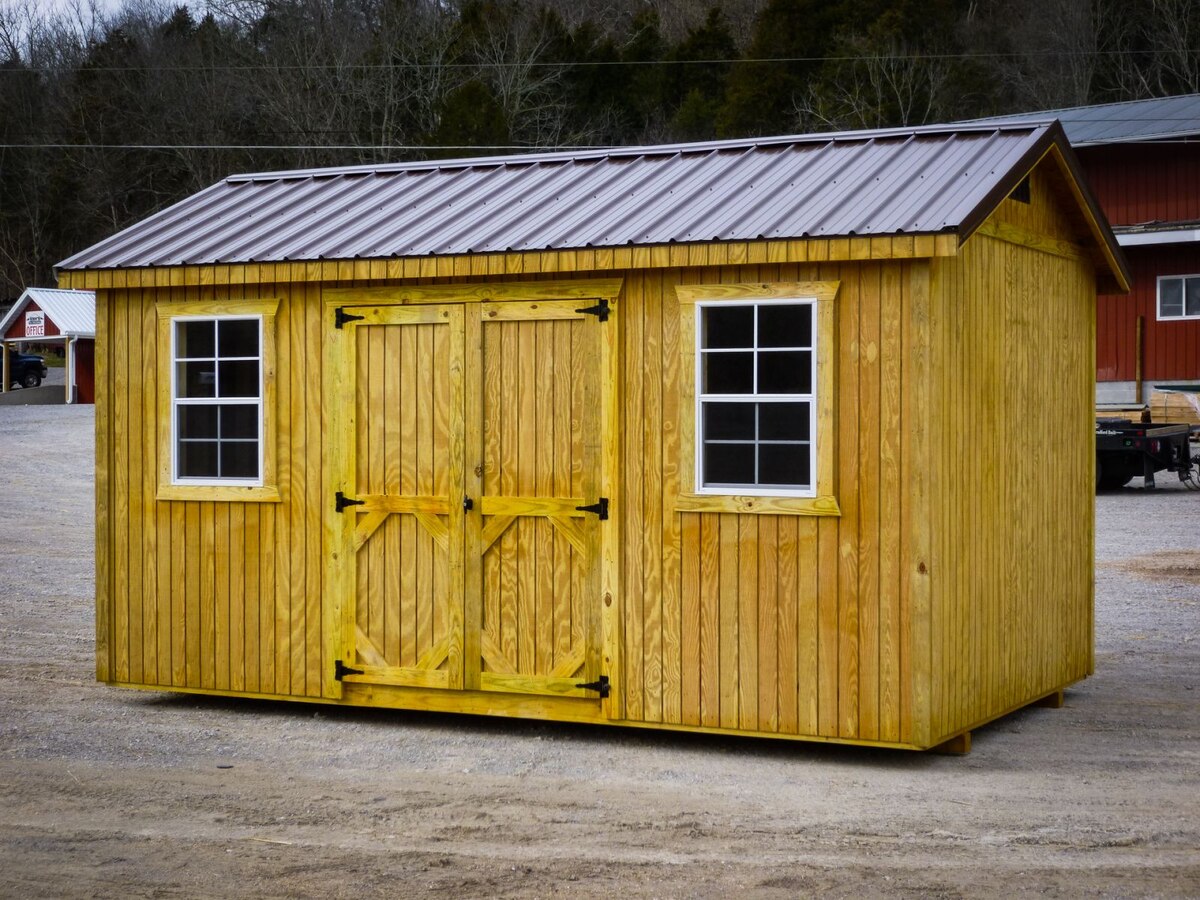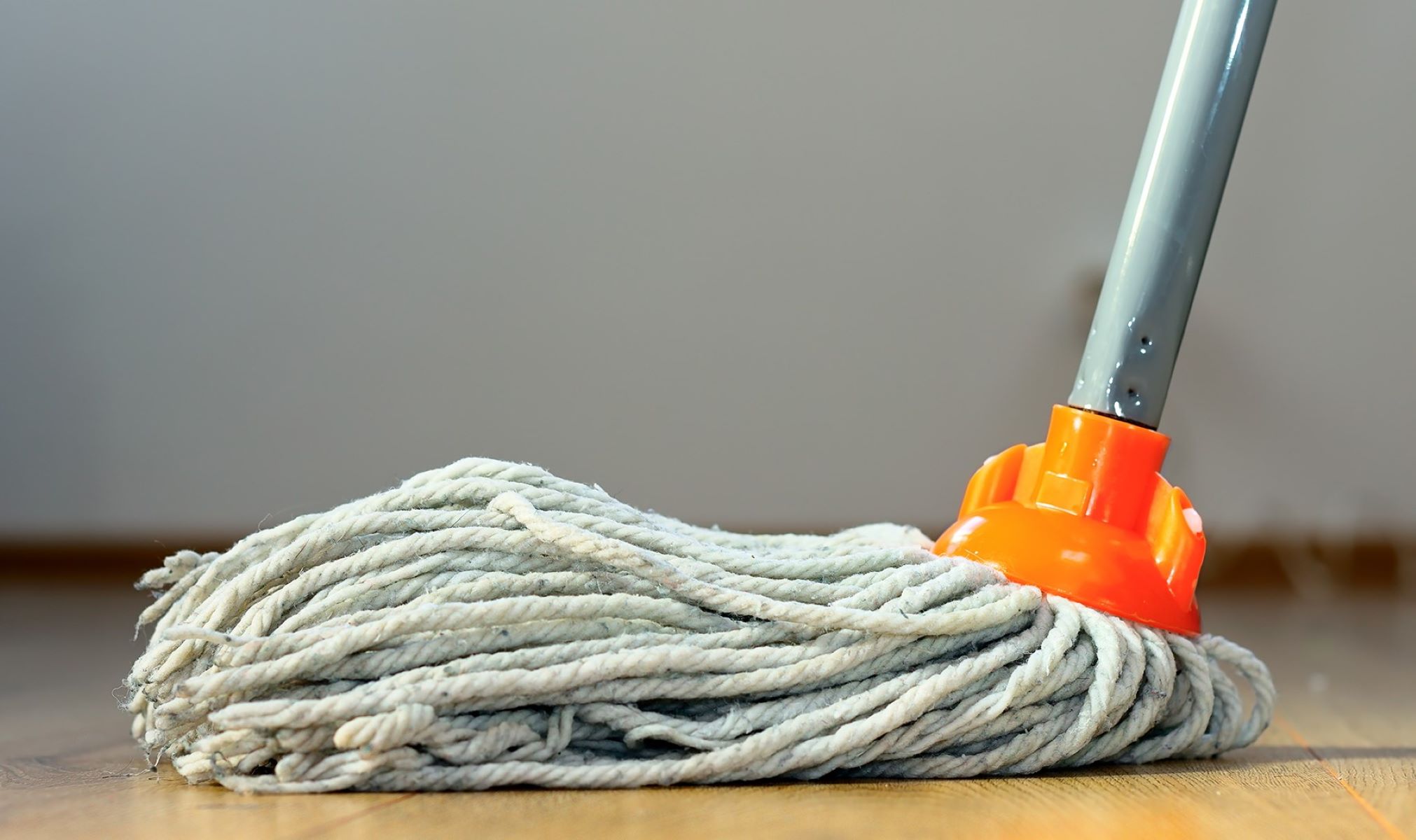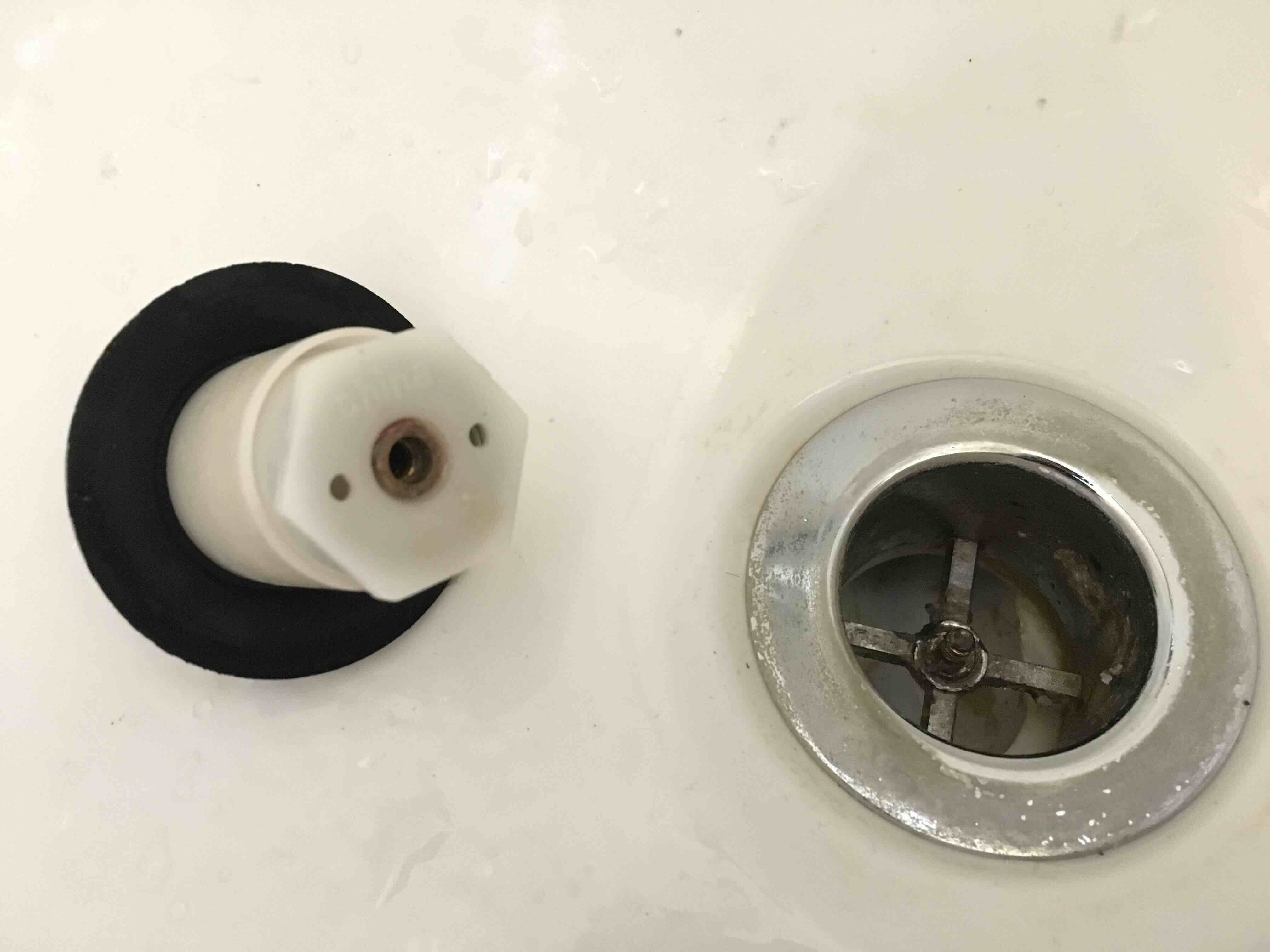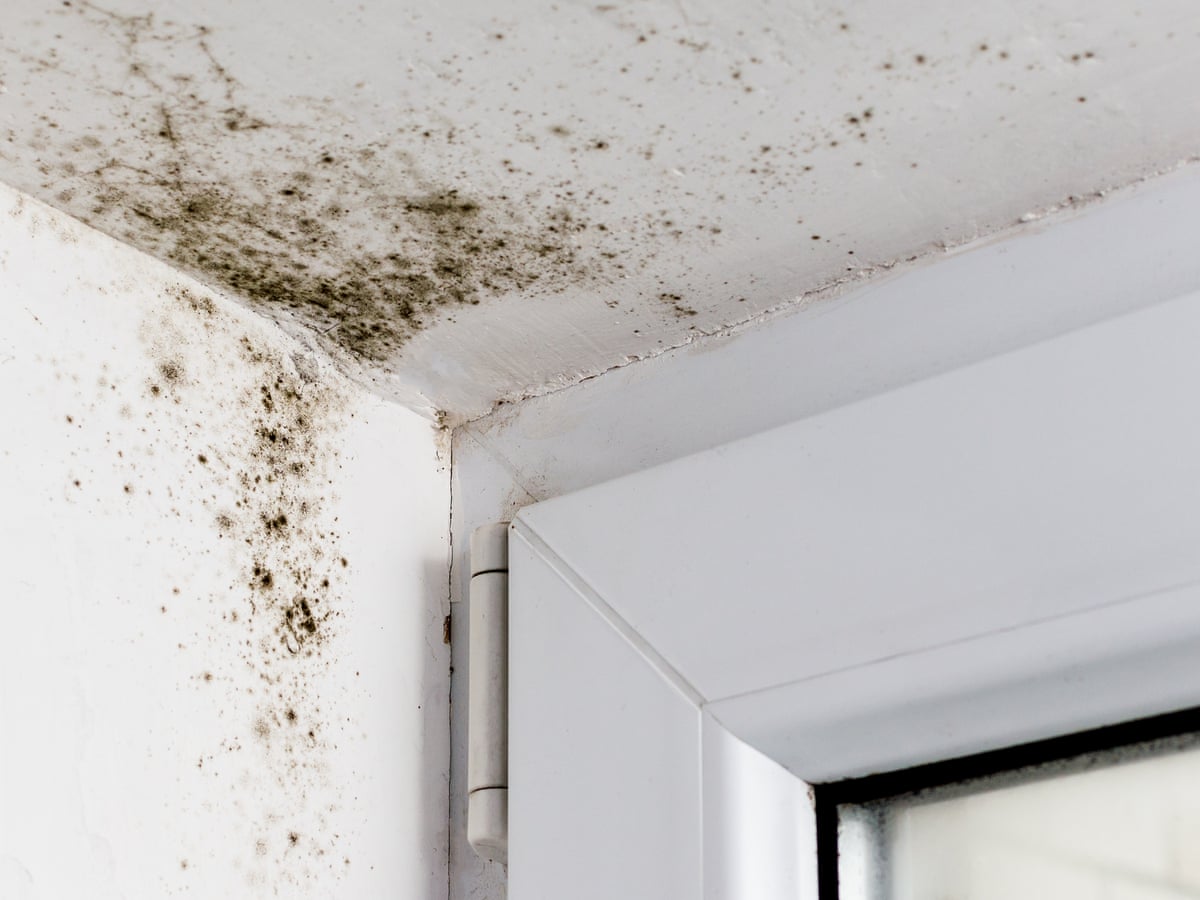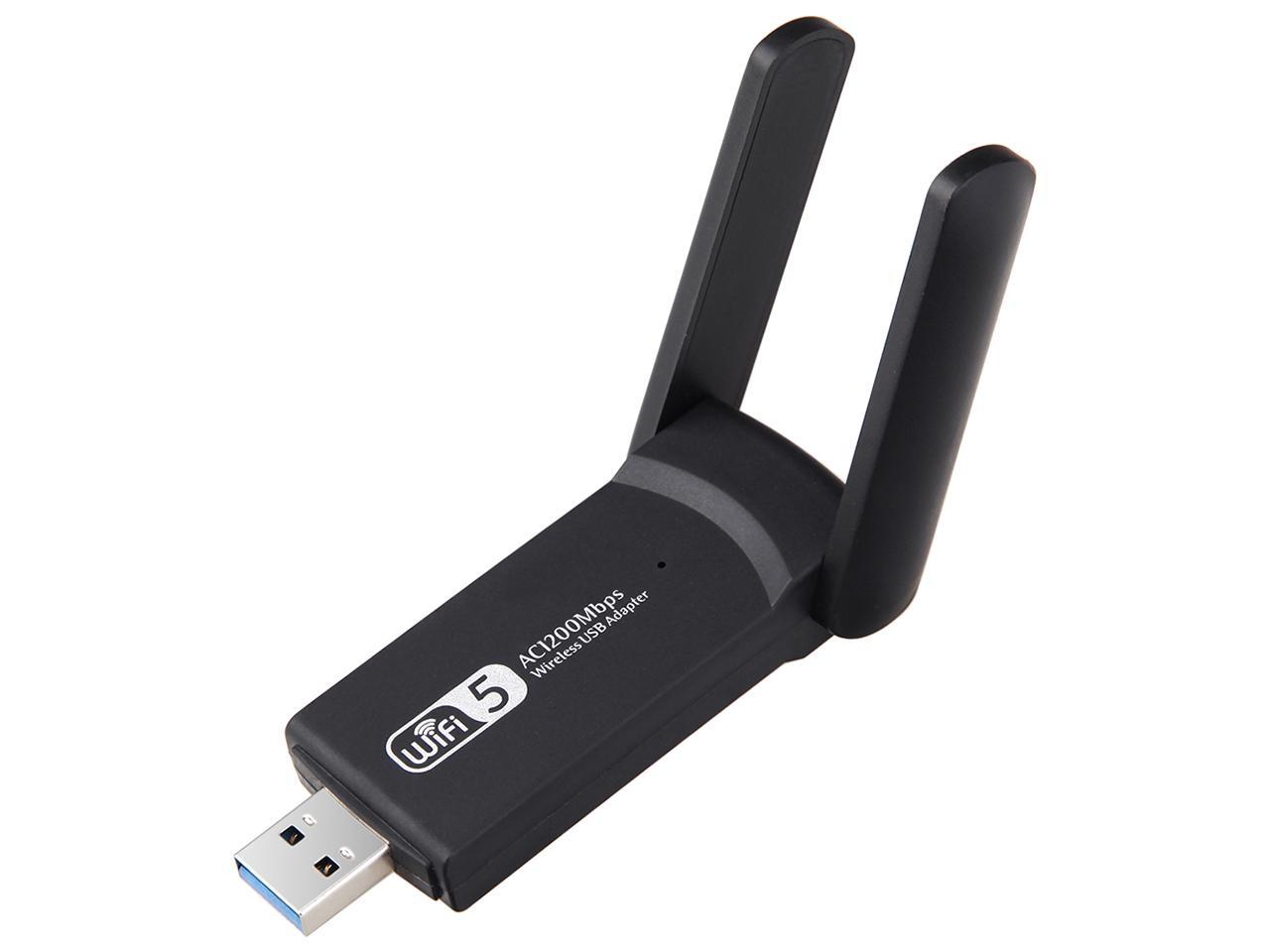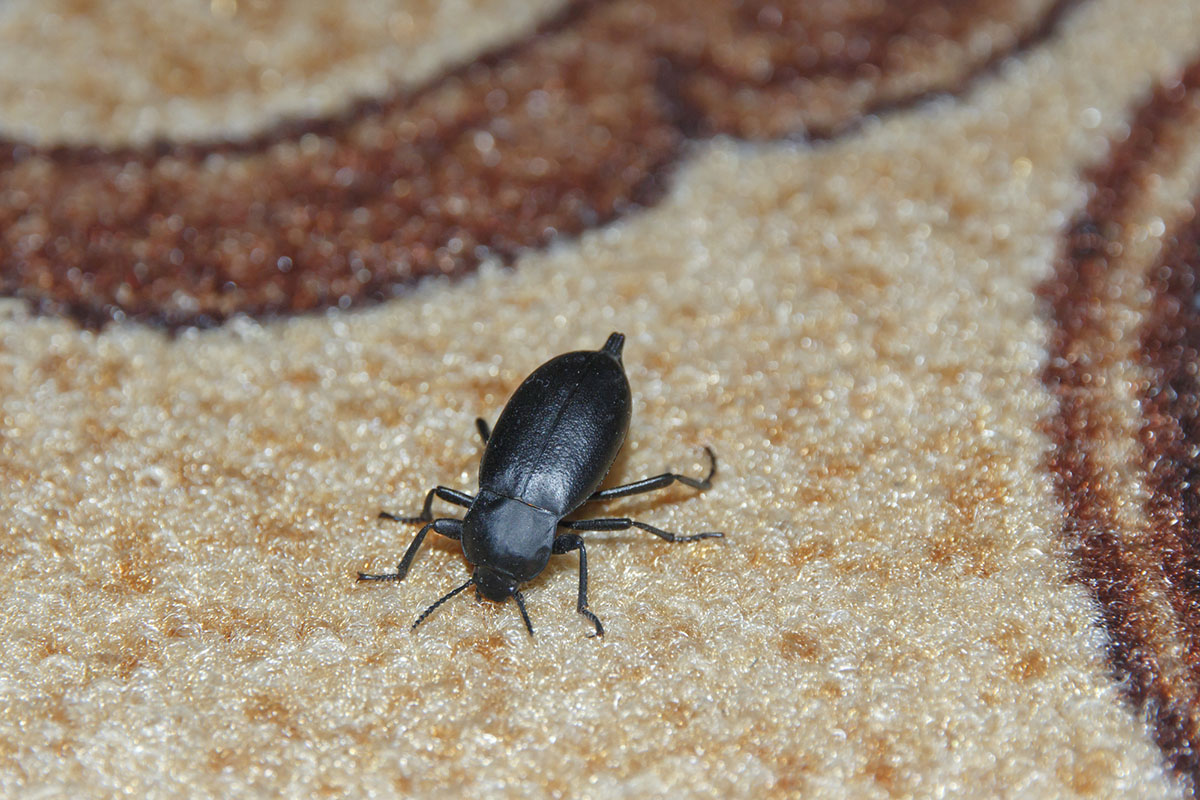

Articles
What Does A Carpet Beetle Look Like
Modified: May 6, 2024
Learn about what a carpet beetle looks like and how to identify them in this informative article. Protect your home from these pests with our expert tips.
(Many of the links in this article redirect to a specific reviewed product. Your purchase of these products through affiliate links helps to generate commission for Storables.com, at no extra cost. Learn more)
Introduction
Carpet beetles are small insects that can be found in homes, feeding on a variety of organic materials such as carpets, fabrics, leather, and even stored food. While often mistaken for bed bugs due to their similar size and ability to cause damage in households, carpet beetles are actually a separate species that can be quite destructive if not properly controlled.
In this article, we will explore the physical characteristics of carpet beetles, their life cycle, habitat, and distribution, as well as their behavior and diet. We will also discuss the damage carpet beetles can cause and provide some prevention and control measures that can help mitigate their presence in your home.
Understanding what carpet beetles look like and how they behave is the first step towards effectively managing and preventing infestations. So let’s delve into the world of these tiny but troublesome insects.
Key Takeaways:
- Regular cleaning and vacuuming are essential for preventing and controlling carpet beetle infestations. Thoroughly clean and launder fabrics and clothing before storing them to minimize the risk of infestation.
- Sealing cracks and openings in your home is crucial in preventing carpet beetle infestations. By effectively blocking their access points, you can significantly reduce the risk of infestation.
Read more: What Does Mold In A Carpet Look Like
Physical Characteristics
Carpet beetles have distinct physical characteristics that set them apart from other common household pests. Understanding these characteristics is essential for accurate identification and effective management.
Coloration and Patterns: Carpet beetles come in various colors, ranging from black and brown to mottled patterns of white, yellow, and orange. The specific coloration and patterns can vary among different species, but most have a combination of dark and lighter shades that help them blend in with their surroundings.
Size and Shape: The size of carpet beetles can range from 1/16 inch to 1/8 inch in length, making them fairly small. They have an oval-shaped body and are covered with small, hair-like structures known as setae. These setae give them a fuzzy appearance, similar to that of a tiny caterpillar.
Body Structure: Carpet beetles have a segmented body with three distinct sections: the head, thorax, and abdomen. Their head is small and equipped with chewing mouthparts, while their thorax is wider and contains the legs and wings, although some species may have wings that are reduced or absent. The abdomen is elongated and can be covered with scales or hairs, depending on the species.
It is important to note that carpet beetle larvae and adults may have slightly different physical characteristics. While the larvae are elongated and cylindrical, ranging in size from 1/8 inch to 1/4 inch, the adult beetles are more compact and have a rounder shape.
Now that we have a basic understanding of the physical characteristics of carpet beetles, let’s explore their life cycle and the different stages they go through from egg to adult.
Coloration and Patterns
Carpet beetles exhibit an array of colors and patterns in their appearance, which can vary depending on the species. These distinct colorations and patterns serve various purposes, including camouflage, mate attraction, and deterrence from predators.
Most carpet beetles have a mottled pattern with a combination of light and dark colors. The colors commonly seen include black, brown, white, yellow, and orange. The specific color variation can be associated with the species and the specific region they inhabit.
One common coloration pattern seen in carpet beetles is a mixture of black and white scales or hairs. This pattern creates a speckled appearance and helps the beetles blend in with their environment. The speckled pattern can serve as effective camouflage, especially in areas with light-colored surfaces or fabrics.
Some species of carpet beetles have a more vibrant and noticeable coloration, characterized by shades of yellow, orange, and red. These bright colors are often seen on their wing covers or elytra. The vibrant coloration serves as a warning sign to potential predators, indicating that the beetles are either toxic or unpalatable. This defense mechanism helps protect the beetles from being eaten by birds or other insect predators.
It is important to note that the coloration and patterns on carpet beetles can vary within a species and even among individuals. This natural variation helps ensure their survival in different environments and provides them with a better chance of camouflage or defense against predators.
Overall, the coloration and patterns seen in carpet beetles are remarkable adaptations that allow them to thrive in diverse habitats. Their ability to blend in or stand out in different surroundings plays a crucial role in their survival and reproduction.
Now that we have explored the coloration and patterns of carpet beetles, let’s move on to their size and shape, which further contribute to their unique appearance.
Size and Shape
Carpet beetles are small insects with a distinct size and shape that sets them apart from other pests commonly found in homes. Understanding their size and shape is essential for accurate identification and effective control measures.
Size: The size of carpet beetles can vary depending on the species and life stage. Generally, adult carpet beetles range in size from 1/16 inch to 1/8 inch in length. This measurement may seem tiny, but their small size allows them to access various areas of a home unnoticed. Additionally, carpet beetle larvae, which are the most destructive stage, typically measure around 1/8 inch to 1/4 inch in length, making them slightly larger than the adults.
Shape: Carpet beetles have an oval-shaped body with a distinct head, thorax, and abdomen. Their body is segmented, giving them a distinct appearance. The head is relatively small, with prominent antennae and chewing mouthparts for feeding. The thorax is wider and contains the legs and, in some species, wings. The abdomen is elongated and can be covered with scales or fine hairs.
It is interesting to note that carpet beetle larvae and adult beetles have slightly different shapes. The larvae have elongated, cylindrical bodies with a pronounced segmentation along their length. They may appear slightly curved, resembling the shape of a caterpillar. In contrast, adult carpet beetles have a more compact and rounder shape, with a distinct head and rounded abdomen.
The small size and unique shape of carpet beetles enable them to navigate through various spaces, such as cracks, crevices, and fibers of materials, making it easier for them to access food sources and hide from predators or human detection.
Now that we have explored the size and shape of carpet beetles, let’s move on to their body structure, including their body segments and physical characteristics.
Body Structure
The body structure of carpet beetles is unique and consists of several distinct segments that contribute to their overall appearance and functionality. Understanding the body structure of these insects helps in accurate identification and understanding their biology.
Head: The head of a carpet beetle is small and located at the front of its body. It is equipped with various sensory structures, including a pair of prominent antennae, which are used to detect chemical signals and locate food sources. The head also contains the beetle’s mouthparts, which are adapted for chewing and consuming a wide range of organic matter.
Thorax: The thorax is the middle section of a carpet beetle’s body and is responsible for housing the insect’s legs and wings. Carpet beetles have three pairs of jointed legs attached to the thorax, enabling them to crawl and scuttle across surfaces. Some species of carpet beetles also possess wings, although they are not proficient flyers and tend to rely on crawling or hopping to move around.
Abdomen: The abdomen is the elongated rear section of a carpet beetle’s body. It is composed of distinct segments and can vary in length depending on the species. The abdomen of carpet beetles may be covered with scales or fine hairs, contributing to their fuzzy appearance. These scales or hairs serve multiple functions, including providing protection, aiding in thermoregulation, and assisting in the collection of pheromones for communication.
Carpet beetle larvae also possess a distinct body structure. The larvae have an elongated and cylindrical body, consisting of several segmented sections. They have a tough outer exoskeleton, which protects them from environmental factors and potential predators.
Understanding the body structure of carpet beetles is crucial for accurate identification and differentiation from other insects. It provides insight into their physical capabilities, such as crawling, chewing, and detecting environmental stimuli, which are important aspects of their survival and behavior.
Now that we have explored the body structure of carpet beetles, let’s dive into their life cycle and the different stages they go through from egg to adulthood.
Read more: What Does Asbestos Under A Carpet Look Like
Life Cycle
The life cycle of a carpet beetle consists of several distinct stages, each with its own characteristics and functions. Understanding these stages is crucial for effectively managing infestations and implementing appropriate control measures.
Larval Stage: The life cycle of carpet beetles begins with the hatching of eggs. Carpet beetle eggs are typically laid in hidden, undisturbed areas such as carpets, upholstery, or inside stored clothing. After a period of incubation, the eggs hatch, giving rise to larvae. The larval stage is where the most damage occurs as these voracious feeders have a high appetite for organic materials. They actively seek out sources of nourishment, such as fabrics, carpets, furs, and stored food products, devouring them as they grow. The larval stage can last for several weeks to months, depending on environmental conditions and food availability.
Pupal Stage: Once the larvae have undergone sufficient growth and development, they enter the pupal stage. During this stage, the larvae encase themselves in a protective cocoon or pupal case, which they build using materials available in their environment, such as fibers or debris. Inside the pupal case, the larvae undergo metamorphosis, transforming into adult beetles. The pupal stage can last for a few weeks to several months, again depending on factors like temperature and food availability.
Adult Stage: After completing the pupal stage, carpet beetles emerge as adults. Adult carpet beetles are typically active during the warmer months and are seeking mates to reproduce. Unlike the larvae, adult carpet beetles do not feed on fabrics, carpets, or stored food products. Instead, their primary focus is on reproducing and laying eggs. Adult carpet beetles have a significantly shorter lifespan compared to the larval stage, typically living for a few weeks or months, depending on environmental conditions.
The duration of the life cycle can vary depending on factors such as temperature, humidity, and food availability. Generally, under optimal conditions, the complete life cycle of a carpet beetle can range from several months to a year.
Understanding the life cycle of carpet beetles is crucial for implementing effective control measures. By targeting the larvae and disrupting their development, homeowners can prevent infestations and minimize the damage caused by these destructive insects.
Now that we have explored the life cycle of carpet beetles, let’s delve into each stage in more detail, starting with the larval stage.
Larval Stage
The larval stage of carpet beetles is the most destructive and notable phase of their life cycle. Carpet beetle larvae are commonly known as “woolly bears” due to their fuzzy appearance and voracious appetite for organic materials. Understanding the characteristics and behavior of carpet beetle larvae is essential for effective control and prevention of infestations.
Appearance: Carpet beetle larvae have elongated, cylindrical bodies with a distinct segmentation along their length. They are covered in fine hairs or setae, which give them a fuzzy or woolly appearance. The color of the larvae can vary depending on the species, ranging from light tan or brown to darker shades of brown or black. The setae serve multiple purposes, including providing protection, aiding in movement, and helping them collect debris for camouflage.
Feeding Habits: Carpet beetle larvae are notorious for their voracious appetite and destructive feeding habits. They primarily feed on a variety of organic materials, with a particular affinity for animal-based products such as wool, fur, feathers, silk, and leather. They can also infest and damage carpets, upholstery, clothing, stored food products, and even insect collections. The larvae have strong jaws that allow them to chew through fibers and materials, leaving behind distinct patterns of feeding damage.
Behavior: Carpet beetle larvae are highly mobile and prefer dark, undisturbed areas where they can find ample food sources. They are attracted to areas that provide a suitable environment for feeding and reproduction, such as the dark and secluded areas of closets, attics, furniture seams, and carpet edges. Carpet beetle larvae are photophobic, meaning they avoid light and prefer to reside in hidden areas where they can feed undisturbed.
Life Span: The duration of the larval stage can last for several weeks to several months, depending on factors such as temperature, relative humidity, and food availability. They undergo multiple molting stages during their development, shedding their exoskeletons as they grow and mature. Each molt results in an increase in size until they reach their full length.
Preventing and controlling carpet beetle infestations starts with targeting the larval stage. Regular inspection, cleaning, and vacuuming of carpets, upholstery, and stored clothing are important to remove any potential food sources for the larvae. It is also crucial to address any moisture issues or leaks in the home, as high humidity can attract carpet beetles.
By understanding the characteristics and behavior of carpet beetle larvae, homeowners can take proactive steps to prevent infestations and minimize damage to fabrics and other valuable belongings.
Next, let’s explore the pupal stage, where the larvae undergo a transformative process to become adult carpet beetles.
Pupal Stage
The pupal stage is a crucial phase in the life cycle of carpet beetles, during which the larvae transform into adult beetles. In this stage, carpet beetle larvae encase themselves in a protective cocoon or pupal case, undergo metamorphosis, and prepare for their emergence as adults. Understanding the pupal stage is essential for effective management and control of carpet beetle infestations.
Cocoon Formation: When carpet beetle larvae are ready to undergo metamorphosis, they construct a protective cocoon or pupal case using materials found in their environment. These pupal cases are typically made of silk and incorporate fibers and debris, providing additional camouflage and protection. The cocoon serves as a shield against external factors, such as temperature fluctuations and potential predators, while allowing the larvae to undergo the transformation into adult beetles.
Metamorphosis: Inside the cocoon, carpet beetle larvae undergo a complete transformation known as metamorphosis. During this process, the larvae gradually change their internal structures and reorganize their body tissues to form the adult beetle. This transformation involves the development of wings, reproductive organs, and other adult features. The duration of the pupal stage can vary depending on environmental conditions and species, lasting anywhere from a few weeks to several months.
Inactivity and Development: While inside the pupal case, carpet beetle larvae remain relatively inactive and undetectable. During this stage, they do not feed or cause any damage to household items. Instead, they focus on the internal development and restructuring necessary for their transition into adulthood. It is worth noting that the length of the pupal stage can be influenced by factors such as temperature, humidity, and the availability of food resources, as well as the individual fitness of the larvae.
Pupal Case Appearance: The pupal cases of carpet beetles are typically small, oval-shaped structures composed of silk and debris. The appearance of these cases can vary in color depending on the materials used during construction, which may include fibers, hairs, and other fragments from the environment. The pupal cases are often found in hidden areas such as cracks, crevices, and within fabric or upholstery where larvae have infested.
The pupal stage of carpet beetles is crucial for their development and transformation into adult beetles. During this period, it is important to focus on preventative measures to reduce the population of larvae and disrupt their life cycle, such as thorough cleaning, vacuuming, and proper storage of fabrics and clothing.
Now that we have explored the pupal stage of carpet beetles, let’s move on to the final stage of their life cycle, the adult stage.
Adult Stage
The adult stage of carpet beetles marks the final phase in their life cycle. After undergoing metamorphosis inside their pupal cases, the larvae emerge as fully developed adult beetles. Understanding the characteristics and behavior of adult carpet beetles is essential for effective management and control of infestations.
Physical Appearance: Adult carpet beetles have distinct characteristics that set them apart from the larval stage. They are typically smaller in size compared to the larvae, ranging from 1/16 inch to 1/8 inch in length. The body of adult carpet beetles is compact and rounded, with an oval shape. The coloration can vary among species but often includes combinations of black, brown, white, yellow, and orange, allowing them to blend in with their surroundings.
Behavior and Lifespan: Adult carpet beetles are primarily focused on reproduction. They seek out mates during their relatively short lifespan, which typically lasts for a few weeks to a few months. Adult carpet beetles are not known to feed on fabrics, carpets, or stored food products like the larvae. Instead, their main objective is to find suitable locations to lay eggs and continue the life cycle. Adult carpet beetles are attracted to light and may be found near windows or other light sources.
Reproduction and Egg Laying: Once mated, female adult carpet beetles lay their eggs in suitable locations where the larvae can find ample food sources upon hatching. Common areas for egg laying include carpets, upholstery, stored clothing, and other organic materials. Female carpet beetles can lay hundreds of eggs during their adult lifespan, helping to ensure the continuation of their species.
Environmental Preferences: Adult carpet beetles prefer warm environments, and their activity tends to increase during the warmer months. They are commonly found in homes, particularly in areas where larvae infestations are prevalent or where natural fibers and organic materials are abundant. Adult carpet beetles are often attracted to areas with an accumulation of dust, lint, and hair, as these can serve as additional food sources for their developing larvae.
Managing and preventing infestations of adult carpet beetles involves controlling the population of larvae and implementing measures to reduce their access to suitable breeding and feeding sites. Regular cleaning, vacuuming, and proper storage of fabrics and clothing are essential practices to minimize the attraction and proliferation of carpet beetles in the adult stage.
Now that we have explored the life cycle of carpet beetles, from the larval stage through the pupal stage to the adult stage, let’s move on to their preferred habitats and distribution.
Read more: What Causes Carpet Beetles
Habitat and Distribution
Carpet beetles have a wide range of habitats and distribution, allowing them to adapt and thrive in various environments around the world. Understanding their preferred habitats and global distribution is essential for effective management and prevention of infestations.
Preferred Environment: Carpet beetles are commonly found in homes, particularly in areas where organic materials are abundant. They thrive in environments that provide a constant supply of food sources, such as carpets, upholstery, clothing, furs, feathers, and stored food products. These materials contain keratin, a protein that serves as a primary food source for carpet beetle larvae. Additionally, carpet beetles are attracted to areas with accumulated dust, lint, and hair, as they can provide additional nutrients for their larvae.
Indoor Infestations: Carpet beetles often infest areas where natural fibers and organic materials are present. This includes residential homes, apartments, museums, libraries, and even commercial buildings. They are particularly problematic in homes with poor sanitation, infrequent cleaning, and improper storage of fabrics and clothing. Carpet beetles can thrive in dark, undisturbed spaces like closets, attics, and basements, where they can find suitable conditions for breeding, feeding, and shelter.
Outdoor Infestations: While carpet beetles are primarily known as indoor pests, they can also be found in outdoor environments. In nature, they typically inhabit bird nests, animal burrows, bee or wasp hives, and other locations where organic materials are abundant. Outdoor infestations can occur when carpet beetles gain access to indoor spaces through openings, cracks, or by hitchhiking on clothing or other items.
Global Distribution: Carpet beetles are found worldwide and are not limited to specific geographic regions. They can be encountered in both temperate and tropical climates, although certain species may have more specific habitat preferences. The varied distribution of carpet beetles can be attributed to their ability to adapt to different environments and exploit various food sources.
Preventing and controlling carpet beetle infestations requires a combination of proactive measures, including regular cleaning, vacuuming, proper storage of fabrics and clothing, and sealing cracks and openings in the home. By eliminating potential food sources and minimizing access points, homeowners can significantly reduce the risk of carpet beetle infestations in their living spaces.
Now that we have explored the preferred habitats and global distribution of carpet beetles, let’s move on to their behavior, diet, and the damage they can cause.
Preferred Environment
Carpet beetles have a preference for environments that provide a steady supply of organic materials, making homes and certain areas particularly attractive to them. Understanding their preferred environment is crucial for effective management and prevention of infestations.
Organic Materials: Carpet beetles are attracted to and feed on a variety of organic materials, especially those rich in keratin. Keratin is a protein found in animal-based products such as wool, fur, feathers, silk, and leather. These materials serve as an abundant food source for carpet beetle larvae, fueling their growth and development.
Fabrics and Upholstery: Carpets, rugs, upholstered furniture, and curtains made of natural fibers make ideal habitats for carpet beetles. These materials provide a conducive environment for infestations, as they contain organic matter and can accumulate dust, lint, and hair. Areas where these items are present, such as living rooms, bedrooms, and closets, are prone to infestations if not properly maintained.
Clothing and Textiles: Carpet beetles are known to infest closets and wardrobes where clothing and textiles are stored. Fabrics made of wool, silk, or natural fibers are particularly susceptible to damage. Carpet beetles may target rarely worn clothing, stored heirlooms, blankets, and even vintage or antique items, causing significant harm if left unchecked.
Stored Food Products: Carpet beetles have a broad diet and can infest stored food products, particularly those with high protein content. Pantries and kitchen cabinets can become infested, leading to contamination and food waste. Common targets can include pet food, cereals, grains, dried fruits, and even spices.
Undisturbed Areas: Carpet beetles prefer dark, quiet, and undisturbed areas where they can flourish. They thrive in hidden spaces, such as cracks in walls, under furniture, behind baseboards, and within the gaps of flooring. These areas provide them with protection and insulation, allowing them to establish colonies and reproduce.
Taking preventive measures to create an unfavorable environment for carpet beetles is key to minimizing infestations. Regular cleaning, vacuuming, and proper storage of fabrics and clothing are essential practices. It is also important to address any moisture issues or leaks, as high humidity can attract carpet beetles.
By understanding the preferred environment of carpet beetles and implementing preventative measures, homeowners can significantly reduce the risk of infestations and safeguard their possessions from damage.
Now that we have explored the preferred environment of carpet beetles, let’s delve into their geographical distribution.
Carpet beetles are small, oval-shaped insects with a varied color pattern of white, brown, and yellow scales. They have a distinctive pattern of scales on their back that resembles a mottled appearance. Keep an eye out for these characteristics to identify carpet beetles in your home.
Geographical Distribution
Carpet beetles have a global distribution, adapting to various climates and environments around the world. Understanding their geographical distribution is essential for identifying potential areas of infestation and implementing appropriate control measures.
Worldwide Distribution: Carpet beetles can be found on every continent, including North America, South America, Europe, Asia, Africa, and Australia. They have adapted to different climatic conditions and can thrive in various habitats, both indoors and outdoors.
Temperate Regions: Carpet beetles are prevalent in temperate regions, such as North America, Europe, and parts of Asia. These regions experience distinct seasons, including cold winters and warm summers. In temperate climates, carpet beetles often seek shelter indoors during the colder months, making homes and buildings susceptible to infestations.
Tropical Regions: While carpet beetles are common in temperate regions, they can also be found in tropical climates. These regions, characterized by high humidity and relatively stable temperatures, provide favorable conditions for the survival and reproduction of carpet beetles. Tropical areas in South America, Southeast Asia, and Africa can experience persistent carpet beetle infestations year-round.
Urban Environments: Carpet beetles have adapted to human-made environments and are frequently encountered in urban areas. They can infest residential homes, apartments, museums, libraries, and commercial buildings. Their presence in urban areas is often linked to the availability of organic materials, such as carpets, upholstery, clothing, and stored food products.
Pest Control and Prevention: Due to their widespread distribution, carpet beetles pose a common pest problem across different regions. Implementing preventive measures, such as regular cleaning, vacuuming, and proper storage of fabrics and food products, is crucial in minimizing infestations. Monitoring and inspecting potential entry points, such as cracks, gaps, and openings, can help reduce the risk of infestation.
It is important to note that while carpet beetles can be found worldwide, specific species may have more restricted distributions based on their habitat preferences and environmental conditions. Understanding the geographical distribution of carpet beetles helps homeowners and pest control professionals develop targeted strategies to manage and control infestations effectively.
Now that we have explored the geographical distribution of carpet beetles, let’s move on to their behavior, diet, and the damage they can cause.
Behavior and Diet
Carpet beetles exhibit distinct behaviors and have specific dietary preferences that contribute to their survival and potential for infestation. Understanding their behavior and diet is crucial for effectively managing and preventing carpet beetle infestations.
Feeding Habits: Carpet beetles have a diverse diet, with a particular affinity for organic materials that contain keratin, a protein found in animal-based products. Their primary targets include wool, fur, feathers, silk, leather, and other natural fabrics. Additionally, carpet beetles can infest stored food products, especially those with high protein content, such as cereals, grain-based products, pet food, and dried fruits.
Damage Caused: Carpet beetles, particularly in their larval stage, can cause significant damage to fabrics, carpets, upholstery, and stored food products. Larvae feed voraciously, chewing through fibers and leaving behind irregularly shaped holes or patches of damage. The extent of the damage depends on the severity and duration of the infestation. In severe cases, carpet beetles can result in the deterioration of valuable items, requiring costly repairs or replacements.
Behavioral Traits: Carpet beetles prefer dark, undisturbed areas, where they can seek shelter and feed without interference. They are photophobic, meaning they are sensitive to light and tend to avoid well-lit areas. Carpet beetles are also attracted to areas with accumulated dust, lint, and hair, which can provide additional nutrients and camouflage for their larvae.
Indoor Infestations: Carpet beetles are commonly found in homes, where they have easy access to a range of potential food sources. Infestations often occur in areas where natural fibers and organic materials are present, such as carpets, rugs, upholstered furniture, closets, and storage areas for clothing and textiles. Improperly stored clothing, especially items that have been rarely used or left undisturbed for long periods, are at particular risk.
Outdoor Presence: While carpet beetles are mainly associated with indoor infestations, they can also be found outdoors. In nature, they can inhabit bird nests, animal burrows, and bee or wasp hives. Outdoor infestations can occur when these pests gain access to indoor spaces through openings or by hitchhiking on clothing or other items.
Controlling carpet beetles involves several measures. Regular cleaning, vacuuming, and proper storage of fabrics and food products are essential preventive practices. Ensuring good sanitation, sealing cracks and openings, and addressing moisture issues can also help in reducing the risk of infestation.
Now that we have explored the behavior and diet of carpet beetles, let’s move on to prevention and control measures to manage these pests effectively.
Read more: What Do Carpet Moths Look Like
Feeding Habits
Carpet beetles have specific feeding habits that contribute to their survival and potential for infestation. Understanding the dietary preferences of carpet beetles is crucial for effectively managing and preventing infestations in homes and other affected areas.
Organic Materials: Carpet beetles feed on a wide range of organic materials, particularly those rich in keratin. Keratin is a protein found in animal-based products such as wool, fur, feathers, silk, leather, and other natural fabrics. These materials serve as a valuable food source for carpet beetles and play a significant role in their development and reproduction.
Animal Products: Carpet beetles have a strong appetite for animal-based products, making them particularly damaging to items such as woolen clothing, fur coats, feather-stuffed pillows, and silk fabrics. They can infest closets, attics, and storage areas where these materials are found.
Carpets and Upholstery: Carpets, rugs, and upholstery made of natural fibers are susceptible to carpet beetle infestations. The larvae feed on the fibers, chewing through them and causing visible damage. Areas with heavy foot traffic or where furniture is placed for prolonged periods are especially susceptible to infestations.
Stored Food Products: Carpet beetles are not limited to feeding on fabrics and fibers alone. They can also infest stored food products, especially those with high protein content, such as cereals, grains, dried fruits, pet food, and even spices. Infested food products may show signs of webbing or fecal pellets.
Feeding Patterns: Carpet beetle larvae leave behind distinct feeding patterns, which can be identified by irregularly shaped holes or patches of damage on fabrics, carpets, upholstery, and other affected materials. They feed from the edges of fabrics inward and tend to avoid areas with constant disturbance or light exposure.
Seasonal Feeding Activity: Carpet beetles are more active during the warmer months, as higher temperatures promote their growth and development. In colder seasons, they tend to seek shelter indoors, where they can find a stable environment and a continuous supply of food.
Preventing and controlling carpet beetle infestations requires a multifaceted approach. Regular cleaning, vacuuming, and proper storage of fabrics, clothing, and food products are essential practices. Promptly address any signs of infestation and consider professional pest control services if the problem persists.
Now that we have explored the feeding habits of carpet beetles, let’s move on to prevention and control measures to effectively manage these pests and protect your home and belongings.
Damage caused by Carpet Beetles
Carpet beetles are notorious for causing damage to a variety of materials found in homes and other affected areas. Understanding the potential damage caused by carpet beetles is crucial for effective management and prevention of infestations.
Fabric Damage: One of the significant concerns with carpet beetles is their ability to damage fabrics. The larvae feed on natural fibers, including wool, silk, cotton, linen, and other materials made from animal or plant sources. They chew through these fabrics, creating irregularly shaped holes or patches of damage. Valuable clothing, curtains, upholstery, and carpets can all be at risk of damage when infested with carpet beetles.
Carpet Damage: As their name suggests, carpet beetles can cause considerable damage to carpets and rugs. The larvae target the fibers of the carpet, chewing through them and leaving behind visible signs of infestation. Infested carpets may show signs of thinning, bare spots, or irregularly shaped holes. Additionally, shedding larvae skins and fecal pellets may be present in infested areas.
Fur and Leather Damage: Carpet beetles have a particular appetite for animal-based products such as fur and leather. Coats, jackets, hats, and accessories made of fur can easily become infested, leading to holes and visible damage. Leather goods, including furniture, bags, and shoes, are also susceptible to carpet beetle infestations. The larvae feed on these materials, causing visible damage and compromising their structural integrity.
Feather Damage: Feather-stuffed items, such as pillows, comforters, and decorative pieces, are attractive to carpet beetle larvae. The larvae feed on the feathers, which can lead to the destruction of the stuffing and a loss of insulation. Infested feather-filled items may appear flattened or lumpy due to the feeding activity of the larvae.
Stored Food Product Contamination: Carpet beetles can infest stored food products, particularly those containing high protein content. Cereals, grains, dried fruits, pet food, and even spices can be targets of infestation. Infested food products may show signs of webbing, fecal pellets, or larvae presence, rendering them inedible and potentially contaminating other stored items.
Collectibles and Artifacts: In addition to textiles and food products, carpet beetles can cause damage to collectibles, artifacts, and insect collections. Taxidermied specimens, museum specimens, and insect collections can be at risk if not stored or displayed properly. The larvae may feed on the natural materials used in preservation techniques, causing irreparable damage.
It is crucial to promptly address carpet beetle infestations to minimize damage and prevent further spread. Regular cleaning, vacuuming, and proper storage of fabrics and food products are essential practices. If infestations persist, professional pest control services may be necessary to effectively manage and eliminate the problem.
Now that we have explored the damage caused by carpet beetles, let’s move on to prevention and control measures to safeguard your belongings and maintain a pest-free environment.
Prevention and Control Measures
Preventing and controlling carpet beetle infestations requires a proactive approach that focuses on minimizing their access to suitable environments and eliminating potential food sources. Implementing preventive measures and adopting effective control strategies can help safeguard your home and belongings from the damage caused by carpet beetles.
Regular Cleaning and Vacuuming: Regular cleaning and vacuuming are essential for removing dust, lint, hair, and other potential food sources that attract carpet beetles. Pay close attention to areas where infestations are likely to occur, such as carpets, rugs, upholstered furniture, and closets. Vacuuming these areas thoroughly, including the edges and seams, can help remove larvae, eggs, and adult beetles.
Proper Storage of Fabrics and Clothing: Proper storage of fabrics and clothing plays a crucial role in preventing carpet beetle infestations. Clean and launder clothing before storing them to eliminate any potential beetle eggs or larvae. Use airtight containers or bags to store fabrics and clothing, ensuring that there are no existing infestations or access points for the pests.
Sealing Cracks and Openings: To prevent carpet beetles from gaining access to your home, it is important to seal cracks, gaps, and openings. Inspect windows, doors, baseboards, and other areas where carpet beetles can enter, and use caulk or sealant to seal off these entry points. This can help minimize the risk of infestation from outdoor sources.
Proper Food Storage: To prevent carpet beetles from infesting stored food products, make sure to store them in airtight containers made of metal or glass. This prevents access to the food source and reduces the risk of contamination. Regularly check stored food items for signs of infestation, such as webbing, larvae, or fecal pellets, and discard any affected products.
Temperature and Humidity Control: Carpet beetles thrive in environments with certain temperature and humidity conditions. Maintaining a cool and dry environment can help deter their activity and discourage infestations. Use dehumidifiers to reduce moisture levels, particularly in areas prone to high humidity, such as basements or crawl spaces.
Professional Pest Control: If carpet beetle infestations persist despite preventive measures, seeking professional pest control services may be necessary. Pest control experts can assess the extent of the infestation and develop effective treatment strategies, including the use of targeted insecticides or other control methods to eliminate the pests.
Preventing and controlling carpet beetle infestations requires a proactive and comprehensive approach. By implementing regular cleaning practices, proper storage, sealing entry points, controlling humidity, and seeking professional assistance when needed, you can effectively manage and prevent carpet beetle problems, safeguard your belongings, and maintain a pest-free environment in your home.
Now that we have explored prevention and control measures for carpet beetles, let’s conclude our discussion.
Regular Cleaning and Vacuuming
Regular cleaning and vacuuming are essential practices for preventing and controlling carpet beetle infestations. These tasks help in removing potential food sources, larvae, eggs, and adult beetles, reducing the risk of damage to fabrics, carpets, and other affected areas. By incorporating regular cleaning and vacuuming into your household routine, you can effectively manage and prevent carpet beetle problems.
Frequent Vacuuming: Vacuuming is one of the most effective ways to remove carpet beetle larvae, eggs, and adults from your home. Use a vacuum cleaner with strong suction power and a high-efficiency particulate air (HEPA) filter to capture tiny particles and allergens. Focus on areas prone to infestations, such as carpets, rugs, upholstered furniture, and closets. Vacuum these areas thoroughly, paying special attention to edges, seams, and crevices where carpet beetles may hide.
Empty Vacuum Bag or Canister: After vacuuming, it is essential to empty the vacuum bag or canister properly. Carpet beetles can survive and escape if left in the vacuum, leading to potential reinfestations. Seal the bag tightly before disposing of it outside your home or empty the canister into a sealed plastic bag. This prevents any surviving beetles or their eggs from infesting other areas of your home.
Regular Cleaning of Fabrics: Fabrics, such as curtains, blankets, and clothing, are susceptible to carpet beetle infestations. Regularly launder these items according to their care instructions, using hot water and high-temperature drying if appropriate for the material. Washing and drying fabrics at high temperatures can eliminate any carpet beetles, larvae, or eggs that might be present. This is especially crucial for items that have been in storage or rotated infrequently.
Thorough Cleaning of Infested Areas: If you notice signs of carpet beetle infestation, such as larvae, shed skins, or damaged fabrics, it is important to clean the affected areas thoroughly. Remove and launder any infested fabrics, vacuum the area meticulously, and discard the vacuum bag or empty the canister as mentioned earlier. Pay close attention to cracks, crevices, and corners where carpet beetles can hide or lay their eggs.
Regular Inspections: Conduct regular inspections of your home to detect any signs of carpet beetle activity. Look for larvae, adult beetles, shed skins, fecal pellets, or visible damage to fabrics or carpets. By identifying infestations early on, you can take prompt action to prevent further spread and minimize damage to your belongings.
Preventative Maintenance: In addition to regular cleaning and vacuuming, practicing good housekeeping habits can help prevent carpet beetle infestations. Keep your home clutter-free, as clutter provides hiding places for carpet beetles. Vacuum and clean upholstered furniture and mattresses regularly, as these can harbor carpet beetles and their eggs. Additionally, minimize the presence of potential food sources for carpet beetles by cleaning up spills promptly and properly storing food items in sealed containers.
Regular cleaning and vacuuming are fundamental practices in the prevention and control of carpet beetle infestations. By incorporating these practices into your routine, you can effectively manage and prevent carpet beetle problems, maintaining a clean, pest-free environment in your home.
Now that we have explored the importance of regular cleaning and vacuuming, let’s conclude our discussion on carpet beetles.
Read more: What Does Thyme Look Like?
Proper Storage of Fabrics and Clothing
Proper storage of fabrics and clothing is crucial in preventing carpet beetle infestations and minimizing damage to your valuable belongings. Carpet beetles are known for their appetite for natural fibers, such as wool, fur, silk, and cotton. By implementing proper storage practices, you can protect your fabrics and clothing from these destructive pests.
Clean Before Storage: Before storing fabrics and clothing, ensure they are clean and free from any food particles, stains, or body oils. Carpet beetles are attracted to these substances, so thoroughly launder or dry-clean items according to their care instructions. Cleaning removes any potential food sources and larvae that may already be present.
Dry Completely: Ensure that all fabrics and clothing are completely dry before storing them. Damp or moist fabrics can attract moisture-seeking pests, including carpet beetles. Moisture can also promote mold and mildew growth, which can damage your items even if there are no active infestations.
Use Airtight Containers or Bags: Store fabrics and clothing in airtight containers or bags to minimize the risk of infestation. This prevents carpet beetles and other pests from accessing your items. Opt for containers made of metal or hard plastic with tight-fitting lids. For clothing, consider using sealed plastic bags, vacuum-sealed bags, or specialized garment storage bags that offer an additional layer of protection.
Avoid Cardboard Boxes: Avoid storing fabrics and clothing in cardboard boxes, as carpet beetles can easily chew through them. Cardboard provides little resistance to these pests, allowing them to access the stored items and cause damage. Opt for sturdier storage options that are less susceptible to pest infiltration.
Ensure a Clean Storage Environment: The storage area should be clean, dry, and well-ventilated to deter carpet beetles. Vacuum and dust the storage space regularly to remove any potential food sources or larvae that may already be present. Minimize clutter and eliminate hiding places for pests, ensuring that stored items are not in contact with the walls or floor.
Rotate Stored Items: Regularly check and rotate stored fabrics and clothing to minimize the risk of prolonged infestations. By moving and inspecting these items periodically, you can identify any signs of carpet beetles or damage early on. This allows you to take prompt action to mitigate the infestation and prevent further spread.
Monitor Stored Items: Keep an eye on stored fabrics and clothing, even after implementing proper storage practices. Regularly inspect your stored items for any signs of carpet beetles, such as larvae, adult beetles, shed skins, or visible damage. Early detection allows for swift intervention and can prevent a minor infestation from escalating into a more significant problem.
Consider Repellents: If desired, you can use natural repellents such as lavender, cedar chips or cedar oil, or dried citrus peels in your stored fabric containers. These natural repellents have a deterrent effect on carpet beetles and can help minimize the risk of infestation. However, their effectiveness may vary, and regular monitoring and proper storage practices should still be maintained.
Proper storage of fabrics and clothing is vital in protecting them from carpet beetle infestations. By keeping your belongings clean, dry, and well-sealed, you can significantly reduce the risk of these pests causing damage. Be vigilant in monitoring stored items and take swift action if you notice any signs of carpet beetles.
Now that we have explored the importance of proper storage for fabrics and clothing, let’s conclude our discussion on preventing carpet beetle infestations.
Sealing Cracks and Openings
Sealing cracks and openings in your home is an important measure in preventing carpet beetle infestations. These pests can enter your living space through tiny gaps and openings, making it necessary to block their access points. By effectively sealing cracks and openings, you can minimize the risk of carpet beetles finding their way into your home.
Identify Potential Entry Points: Inspect your home thoroughly to identify any cracks, gaps, or openings where carpet beetles may gain access. Common entry points include gaps around windows and doors, openings around pipes or utility lines, gaps in baseboards or molding, and spaces around vents or chimneys.
Use Caulk or Sealant: Once potential entry points have been identified, use caulk or sealant to fill in gaps and cracks. Choose an appropriate caulk or sealant that is compatible with the material you are sealing, such as wood, metal, or masonry. Apply the caulk or sealant to fill in the gaps completely, ensuring a tight seal to prevent carpet beetles from entering.
Weatherstripping: To seal gaps around windows and doors, consider using weatherstripping. Weatherstripping is a durable material, such as adhesive-backed foam or rubber, that is designed to fill in gaps and create a tight seal when windows and doors are closed. Apply weatherstripping to the frames to prevent carpet beetles from squeezing through small openings.
Door Sweeps: Install door sweeps on the bottom of exterior doors to seal the gap between the door and the floor. Door sweeps act as a barrier, preventing carpet beetles from crawling under the door and entering your home. Choose door sweeps that are appropriate for your door type and install them securely to ensure a tight seal.
Maintain Window Screens: Ensure that window screens are intact and free from tears or openings. If necessary, repair or replace damaged screens to prevent carpet beetles from accessing your home through open windows or damaged screens. Regularly clean the screens to remove any debris that may provide food sources or attract carpet beetles.
Repair Cracks and Damage: Cracks or damage in the walls, floors, or ceilings can create opportunities for carpet beetles to enter your home. Repair any visible cracks or damage promptly to close off these access points. Use appropriate patching materials, such as spackle or drywall compound, to repair the affected areas and create a smooth, seamless surface.
Stay Vigilant: Even after sealing cracks and openings, it is important to periodically inspect your home for any signs of new gaps or openings. Stay vigilant and address any potential entry points immediately to maintain the integrity of your home’s defense against carpet beetles.
Sealing cracks and openings is a crucial step in preventing carpet beetles from infesting your home. By effectively blocking their access points, you can significantly reduce the risk of carpet beetles entering your living space and causing damage to your belongings. Combine sealing measures with regular cleaning, vacuuming, and proper storage practices for comprehensive carpet beetle prevention.
Now that we have explored the importance of sealing cracks and openings, let’s conclude our discussion on preventing carpet beetle infestations.
Use of Insecticides
The use of insecticides can be an effective component of a comprehensive strategy to control and manage carpet beetle infestations. Insecticides are designed to target pests, including carpet beetles, and can help eliminate existing infestations and prevent further damage to your home and belongings. However, it is important to use insecticides safely and according to label instructions.
Identify the Infested Areas: Before using insecticides, it is crucial to identify the areas that are infested with carpet beetles. Focus on areas where larvae, adult beetles, or visible damage have been observed, such as carpets, rugs, upholstered furniture, and closets. This will help in directing the application and ensuring efficient treatment.
Choose the Right Insecticide: There are various insecticides available for carpet beetle control. It is important to select the appropriate one for your specific needs. Look for insecticides labeled for use against carpet beetles and follow the instructions carefully. Consider consulting with a pest control professional for guidance on choosing the most effective and appropriate insecticide for your situation.
Read and Follow Label Instructions: Carefully read and follow the label instructions and safety precautions provided by the manufacturer before using any insecticide. Pay close attention to guidelines regarding mixing, dilution ratios, application methods, personal protective equipment (PPE), and any specific precautions for indoor use. Adhering to the instructions will help ensure effective and safe application.
Targeted Application: Apply the insecticide directly to the infested areas with caution and precision. Depending on the formulation of the insecticide, it can be sprayed onto surfaces, used as a dust or powder, or applied with a localized treatment method. Pay close attention to areas where carpet beetles are likely to hide, such as cracks, crevices, and along baseboards. Avoid excessive application to limit potential exposure.
Consider Professional Assistance: If you have a severe or persistent infestation, consider seeking professional pest control services. Pest control professionals have the knowledge, training, and access to a range of insecticides and application techniques suitable for controlling carpet beetles. They can assess the situation and develop a targeted treatment plan to effectively manage the infestation.
Follow-up and Monitoring: Insecticides may provide immediate control of carpet beetles, but follow-up measures are crucial for long-term prevention. Regularly monitor the treated areas and inspect for any signs of reinfestation. If necessary, reapply the insecticide or consider implementing preventive practices, such as regular cleaning, vacuuming, and proper storage, to maintain control and prevent future infestations.
Keep Safety in Mind: Always prioritize safety when using insecticides. Wear appropriate personal protective equipment (PPE), such as gloves and a mask, during application. Keep children, pets, and others away from treated areas until the insecticide has dried or as indicated on the label. Store and dispose of insecticides as instructed on the product label to prevent accidental exposure or environmental contamination.
The use of insecticides can be an effective tool in the control and management of carpet beetles. However, it is important to use them responsibly, following label instructions and considering the potential risks associated with their use. When used in conjunction with other preventive measures and proper storage practices, insecticides can help eliminate carpet beetles and protect your home and belongings.
Now that we have explored the use of insecticides in controlling carpet beetles, let’s conclude our discussion.
Conclusion
Carpet beetles can be a nuisance and cause significant damage to fabrics, carpets, upholstery, and stored food products. Understanding their physical characteristics, life cycle, habitat, behavior, and diet is essential for effective prevention and control of infestations. By implementing preventive measures and adopting appropriate control strategies, you can protect your home and belongings from the destructive impact of carpet beetles.
Regular cleaning and vacuuming play a crucial role in removing potential food sources, larvae, eggs, and adult beetles from your living space. Thoroughly clean and launder fabrics and clothing before storing them, using airtight containers or bags to minimize the risk of infestation. Sealing cracks, gaps, and openings helps disrupt carpet beetles’ access to your home, reducing the chances of infestation.
Monitoring and inspecting your home regularly for signs of carpet beetles allow for early detection and intervention. Prompt action, including the use of targeted insecticides if necessary, can help eliminate existing infestations and prevent further damage. However, it is essential to use insecticides safely and according to label instructions, ensuring proper application and taking necessary precautions.
Preventing carpet beetle infestations requires a comprehensive approach that combines regular cleaning, proper storage of fabrics and food products, sealing cracks and openings, and periodic inspections. Professional pest control assistance may be necessary for severe infestations or persistent problems.
By implementing these measures and staying vigilant, you can effectively manage and prevent carpet beetle infestations, ensuring the protection of your home and preserving the integrity of your belongings.
Remember, carpet beetles are manageable pests with proper knowledge, prevention, and control measures. With your efforts, you can keep these destructive pests at bay and maintain a pest-free environment for you and your family.
Now that you're equipped with knowledge on spotting carpet beetles, why not tackle another common pest? If your pantry seems like it's under siege by moths, our next read offers expert advice on regaining control. Perfect your pest control skills by learning effective strategies to rid your home of pantry moths for good. Don't let these unwelcome guests ruin your food storage!
Frequently Asked Questions about What Does A Carpet Beetle Look Like
Was this page helpful?
At Storables.com, we guarantee accurate and reliable information. Our content, validated by Expert Board Contributors, is crafted following stringent Editorial Policies. We're committed to providing you with well-researched, expert-backed insights for all your informational needs.


